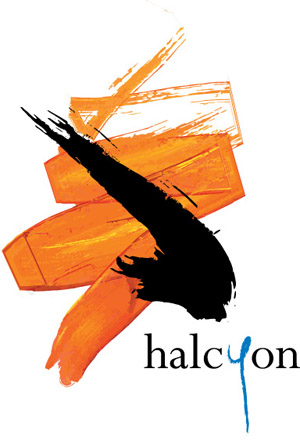HALCYON, WHERE THE HEART IS
Bay 20, CarriageWorks Sept 13
RealTime October-November 2010
Reviewed by Keith Gallasch
blues, myth, philosophy & the land
While not a program of the scale and potency of Extreme Nature (RT93) which featured big, challenging works by Australians Elliott Gyger and Nicolas Vines, Halcyon’s Where The Heart Is, is a program featuring six more Australian works, all fascinating and revealing a rich variety of practice.
Ross Edwards’ Maninya (1981), inspired by the natural environment, comprises hypnotic if rhythmically complex series of apparently meaningless syllables sung by Jenny Duck Chong to Geoffrey Gartner’s talkative cello in passages that evoke lullaby and reverie and closing with a cello jig.
Elliott Gyger’s Petit Testament, like From the Hungry Waiting Country (2006 and soon to be released on CD) in the Extreme Nature program, responds to Australian poetry, here in the form of the last of the Ern Malley hoax poems. Once again Gyger provides Duck Chong and Alison Morgan the opportunity to “highlight one of our particular skills—the illusion of singing ‘as one’ and masquerading as one another” (program note). As Gyger writes, “My setting re-enacts James McAuley’s and Harold Stewart’s dazzling feat of ventriloquism (two real poets masquerading as one fictional poet) in employing two voices to project a single musical lie, slipping unpredictably between unison, heterophony and interior dialogue.” The sopranos dexterously managed the overlaps, sharply articulated modulations and shared sentences while the Stuart & Sons piano (played admirably by Sally Whitwell) provided a resonant other voice, alternately dramatic and ironic, lyrical or ‘going to pieces.’ Gyger aptly evokes both fraudulent excess and the odd beauty of the poem.
One of two highlights of the concert was Andrew Schultz’s To the Evening Star (2009; Best Song Cycle, Paul Lowin Awards), a reflection, writes the composer, on the inner creative life, responding to poems by Yeats, Hopkins, Longfellow, WH Davis and Blake. Yeats dreams lyrically of rural escape while the busy piano suggests both the “bee-loud glade” and “the roadway…the pavements gray.” For Hopkins’ Pied Beauty, Schultz and singer, Alison Morgan, hit the syllables hard and rapidly, evoking excitement at the density of natural riches. Longfellow’s anxiety about a creative life only half fulfilled is rendered emotionally, a soaring complaint, the piano thundering in empathy, while Davies’ Money, O! contrastively celebrates being poor but happy in a vigorous folksy, music theatre idiom. Finally, Blake’s To the Evening Star is a gloriously sung prayer for divine protection framed by piano scoring that seems to embrace the whole of the world, the playing constantly pushing out to the bottom and top-most notes simultaneously until at rest.
Anne Boyd’s Cycle of Love (1981) is in the form of three sung ancient Korean poems and two instrumental interludes (Gartner’s cello and Sally Walker’s flute in exquisite dialogue). For all the meditative Korean and Japanese influences, the compositions are lively, even dramatic and certainly heartfelt in their longing.
The final work, folk singer and musicologist Ruth Lee Martin’s Wimmera Song Cycle (2010), a setting of Kevin Hart’s Wimmera Songs, surprised me with its transparent structure, its deceptively musical theatre character and ease (apt for the uncomplicated syntax of the poet’s finely crafted image-making). Sopranos, cellist, pianist and flautist combined in various permutations to evoke the spread and detail of the land, through moments of delicate observation, pain (“the other silence that fits your head inside a vice”) and the potential for transcendence—“Think like a cloud / Go where the clouds go.”
Halcyon, Where the Heart Is…celebrating homegrown music, CarriageWorks, Sydney, Sept 13
RealTime issue #99 Oct-Nov 2010 pg. 49
© Keith Gallasch

